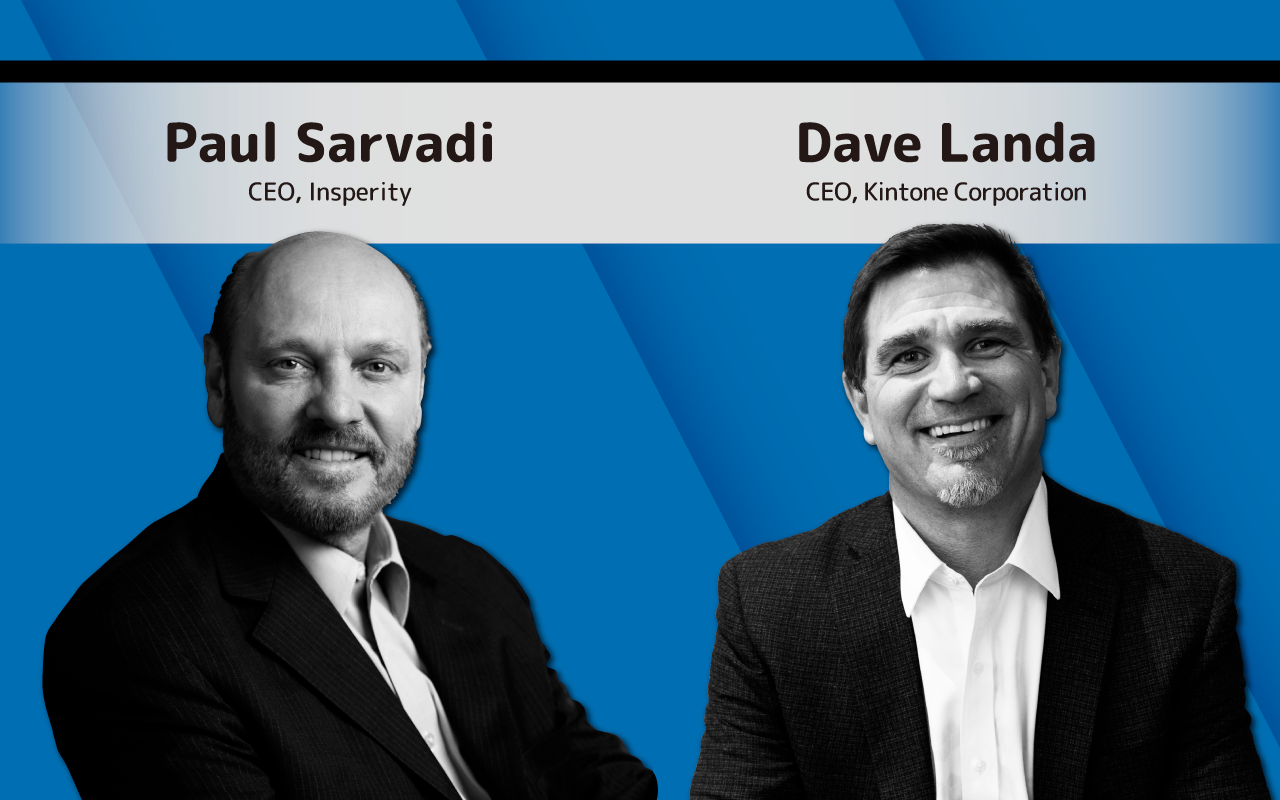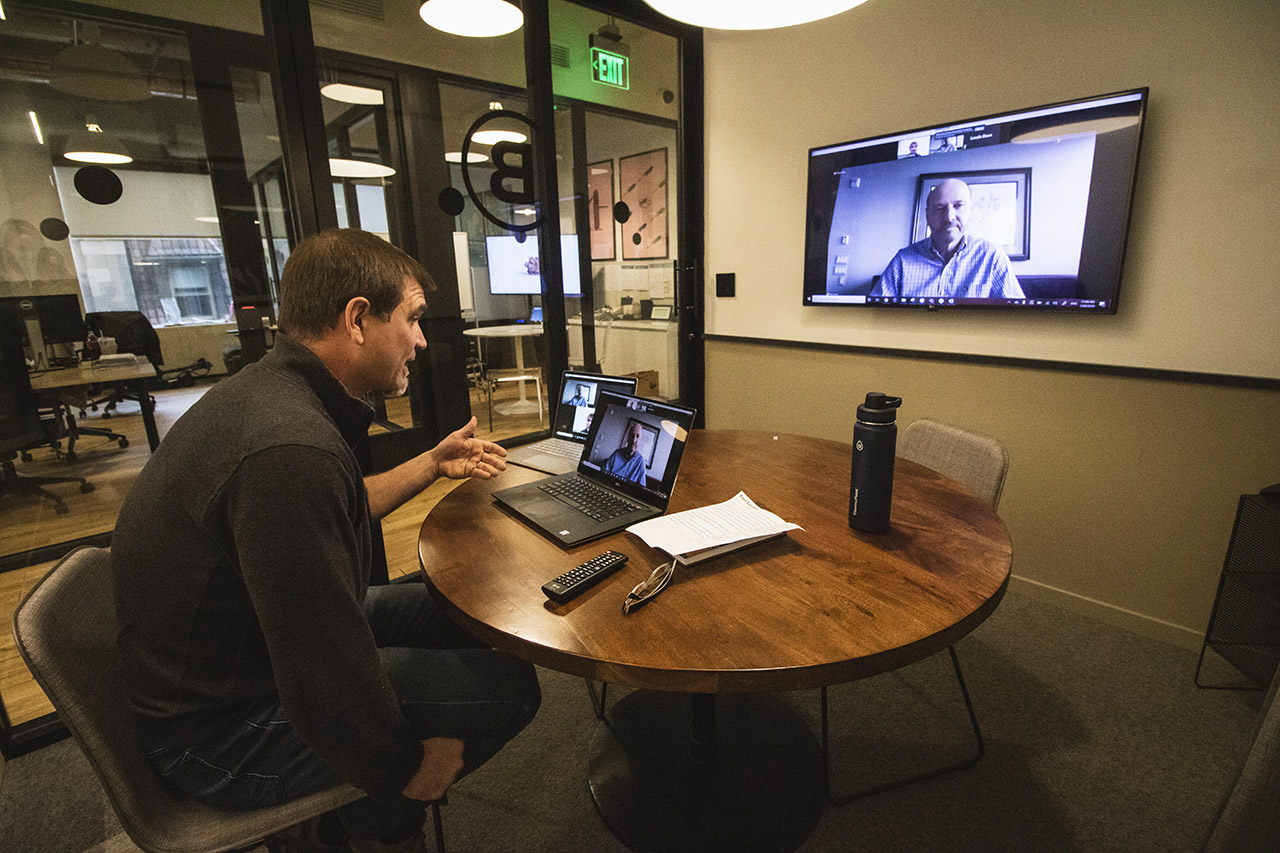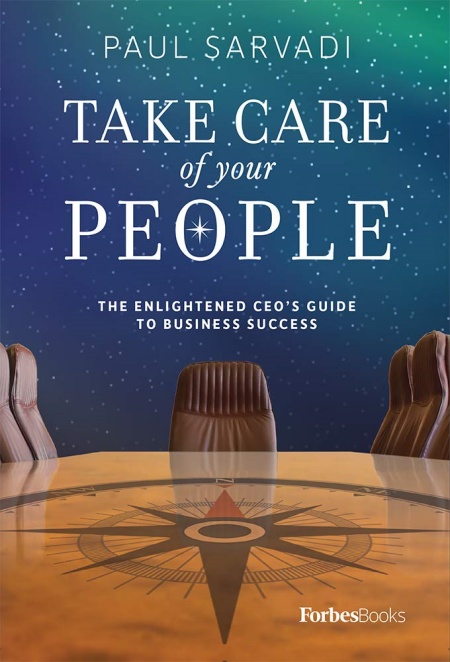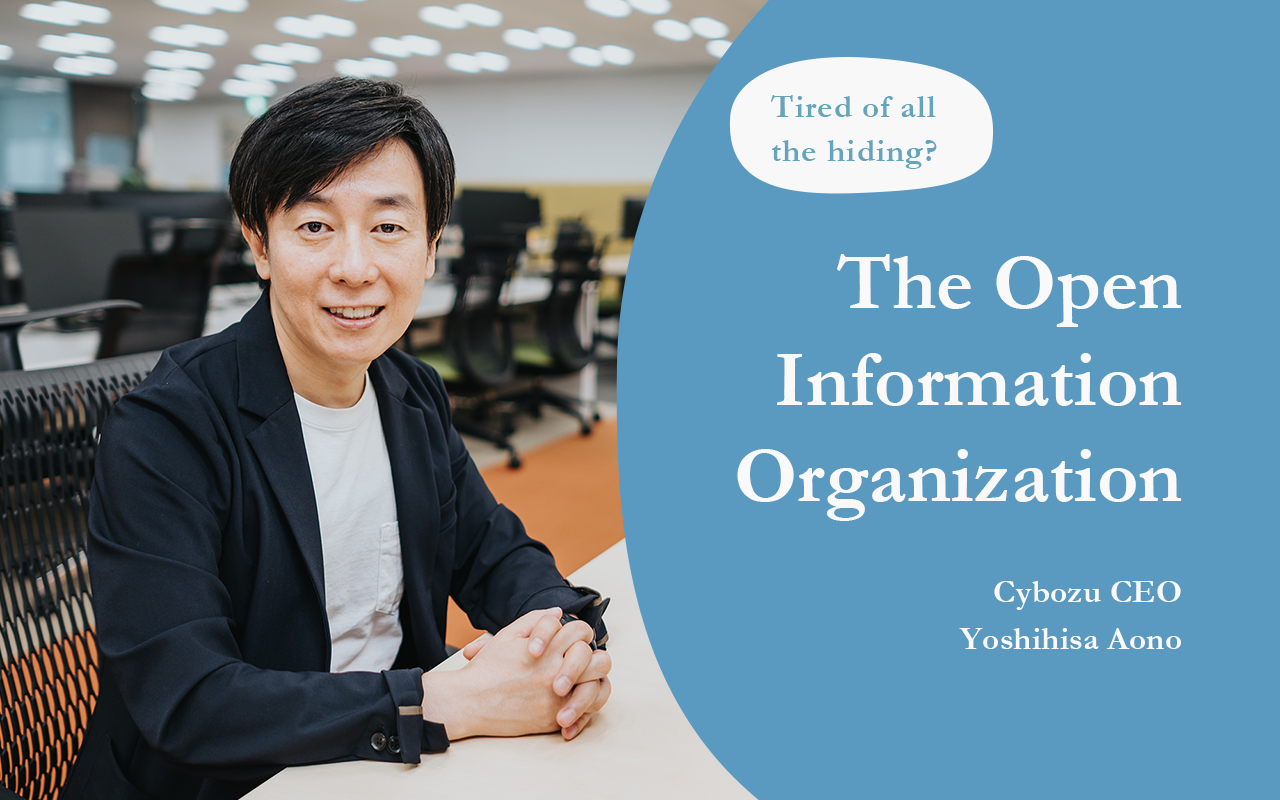Designing Company Culture Is the Easy Part―Implementation Is What Matters
Interview with Paul Sarvadi, leadership author and chairman and CEO of Insperity.

Anybody with some spare time and a budget for leadership books can probably sketch out a design for an awesome company culture. Their blueprint will usually blend some catchy business concepts, like transparency and honesty, diversity and responsibility, respect and integrity.
However, even some of the most imaginative and well-intentioned companies fail to bring those designs to life. Mission statements ring hollow, values are dismissed as lofty goals, and aspirations fail to translate into actual behavior.
As any business leader can attest, the design phase is the easy part. Building culture takes effort; persistent, strenuous, determined effort. Fortunately, some leaders have journeyed through the pitfalls of cultural implementation and collected enough experience to advise fellow travelers. One such trailblazer is Paul Sarvadi, chairman and CEO of Insperity, a leading provider of human resources and business performance solutions, as well as author of Take Care of Your People: The Enlightened CEO's Guide to Business Success.
Dave Landa, the CEO of top groupware provider Kintone and teamwork specialist in his own right, reached out to Paul to chat about what it takes to develop a robust, durable company culture.
Designing your culture is just the first step
Dave: I want to jump right in and ask, in your experience as a CEO, where do you find that company culture comes from?
Paul: From my point of view, culture can come in two ways: either by default or by design. In either event it really comes out of whatever the mission, vision and especially values are that leadership expounds and employees embrace.
The default way is a kind of natural process. Design is, in my opinion, always more effective, because you can reach the outcome that you're really looking for.
Dave: When trying to design a company's culture, how much control does a leader really have?
Paul: Leadership can do a lot to not only establish the culture, but also ensure that it's maintained, driven forward and continually optimized. Leadership, starting with the CEO, has to demonstrate that they fully buy into the values and what they're trying to accomplish as a company.
Then, culture has to be reinforced! Even beyond reinforced, I like to call it institutionalized. The culture you established should flow through every aspect of how you interact with your people. From employee communication to recruiting, to compensation, to how you handle difficult issues—whatever your leadership philosophy is, all these elements are woven together by culture.
I like to describe culture as not really part of the engine, but as the oil that makes the engine actually work at all. If you want your engine to run—especially if you want it to run fast—you need to have a focus on company culture.

Paul Sarvadi is the chairman, CEO and co-founder of Houston-based Insperity, a leading provider of human resources and business performance solutions. Under his leadership, Insperity has grown from a two-person operation with three initial clients to a publicly traded company providing business performance solutions that support more than 100,000 businesses with over 2 million employees. With 2019 revenues of $4.3 billion, Insperity operates in 82 offices throughout the United States. Paul was inducted into the Texas Business Hall of Fame in 2007.
Based on his experience as a successful businessman, entrepreneur and CEO, Paul has become a thought authority on leadership and corporate culture. His first book, Take Care of Your People: The Enlightened CEO's Guide to Business Success, was released in January 2019.
Dave: That's a valuable message for leaders, and something we're very focused on at Kintone. Our mission, values and vision are all clearly defined, and we try to make sure our activities reflect and reinforce those values.
As a concrete example, we have developed a problem-solving methodology that we deploy across our entire organization. That methodology really focuses on the core elements of our culture, namely transparency, being yourself, taking responsibility, and respect for individuality and diversity.Do you have other examples of those types of activities from your company, Insperity?
Paul: For us, I would point to our recognition system. We have been using a recognition system over the years not only to support our ongoing communication with employees, but also to reinforce our actual values and the behaviors that demonstrate those values.
When an employee accomplishes an objective, they are not only recognized for what was accomplished, but also for the values they demonstrated. Those values can be anything from innovation, to the perseverance it takes to succeed, to respect for others, to excellent service.
All these values are central to our culture, and we found that you can keep them front and center for all employees by proactively highlighting them through your reward and recognition programs.

Dave Landa is the CEO of Kintone Corporation. He has been at the forefront of the Cloud revolution driving strategic business development on the executive teams of multiple leading Software as a Services (SaaS) application providers since 2004. Dave has previously driven hyper-growth at Fortune 500 companies (Ball Corporation) and startups alike (Blue Rice, SPG Solutions, Electric Run). He has also been instrumental in bringing a mid-stage company through to a successful IPO (Active Network).
Diverse individuals pursuing a common mission
Dave: Once you've established the culture you want in your company, it's important to hire folks who are aligned with that culture. At Kintone, we have a list of values that we use to assess that alignment.
However, there's one bit of tension that we noticed, and I'm curious to hear your thoughts on it. On the one hand, you want the folks coming on board to be aligned with your values, but on the other hand, you want to encourage diversity in order to drive innovation and creative thinking. If you're only hiring people aligned with a common vision, how do you make sure you're still getting diverse people who all bring something different to the table?
Paul: I don't think those are opposed in any way. Any company has to have a mindset for welcoming all types of people in order to drive innovation. That being said, I've found that it's commonality that leads to the most successful diversity in an organization.
By commonality, I mean finding people with common values and a heart for whatever the mission is. The focus of your recruiting effort should be trying to find those individuals. In our case for example, our heroes are the small and midsized company business owners who trust us. When we recruit, we look for people who have a heart for small and midsized businesses—for example, maybe their parents started a business, or maybe they started one themselves. Once you have that mission and those values to drive your company, you can recruit a wide range of people, because people who connect with your mission can come from any background.
Transparency only makes sense when acted upon
Dave: Another value that we really focus on at Kintone is transparency—almost radical transparency. We encourage team members to raise their hand, always respectfully, and bring issues to the forefront.
Our commitment to transparency has led to situations where individual team members call out leadership for not abiding by the same standard of transparency as members of their team. Have you had to deal with that kind of situation? How would you respond?
Paul: That's certainly one of the risks of a strong culture, but you want to encourage that type of honesty and transparency. Those situations are a sign that you have a productive culture, as long as you're willing to address the issues that come up.
It's like when you conduct an employee survey: Don't do it unless you're willing to do something about the information you get back. If you establish clear ways of gathering feedback, then you can avoid the festering emotions that lead to explosive reactions.
There are a variety of good feedback mechanisms you can establish, whether it's survey information, smaller meetings; or what I do is answer any question at our company meetings. People can submit any question and I'll answer. It's turned into a fun thing, but it actually gave me a great opportunity to address underlying issues. If one person was submitting the question, think of how many others were actually harboring those same doubts!

Paul: It's also important to have a clearly defined way to deal with disagreement. Agreeing on how you're going to disagree is one of the missing links for a lot of companies. In our organization, we pretty much have an open-door policy with management. Anybody can walk into my office if they want, and I'm happy to talk to them. But at the same time, we try hard to limit gossip or third-party dialogue. We try to say, "If you have a problem with something I've said or done, you know it's your obligation to come talk to me."
The other thing we reinforce is to make sure you don't impugn the motives of another person. We want people to come forward and say, "I've seen something that's bothering me. I'm sure it's not your intent, but here's what I'm seeing, and I'd like to get your feedback on it." That creates an environment in which the issue can be discussed, and often times the other person will say, "That's not what I intended to communicate." Having that kind of culture creates a respectful environment where people assume the best of one another.
If you assume the best about people, you can manage through the worst of experiences. That's something a lot of companies should learn.
Dave: I love that! We have a method for managing disagreement in our company, which we call the "aspiration engine." A core focus is blamelessness—nobody is to blame. We just have a problem that needs to be solved. Then we take time to really define the problem, separating the subjective from the objective. After that, as we establish the facts, we think of the ideal objective reality we're aiming for, and we come up with the steps to get there. Sounds like we're very much aligned!
Authority over power, inspiration over motivation
Dave: In your book, you elaborate on the concept of servant leadership. What is servant leadership? Could you give me some examples?
Paul: Absolutely. Servant leadership is an approach to working with people that establishes the leadership role through authority, as opposed to power.
Power is not always negative. In a military situation, when people are expected to respond immediately to whatever needs to be done, you want to have a very clear power structure. When you're out on the battlefield and someone yells "Duck!" there's nothing to discuss, you have to duck.
However, in a business setting—as in most other settings—authority is a far better foundation for leadership. By authority, I mean establishing personal influence on a one-on-one basis, so that you earn the person's willingness to follow.
Servant leadership turns the traditional view of leadership on its head. Instead of having a leader at the top, then layers of management all the way down to the front lines, you want the opposite. You want an environment where the leader is at the bottom, serving the ones who actually report to them, and you want that concept to extend throughout the organization.
Most people have experienced servant leadership; somebody in their life they would charge the hill for. Could be a teacher, a coach, a parent, or maybe a big brother or sister. Over the course of your lifetime, I'm sure you've developed a strong connection with somebody for whom you're willing to give your best effort. That's what you're looking for; that's servant leadership.
Dave: That idea of exerting personal influence so that people want to follow you is similar to how we see communication at Kintone. Being able to communicate isn't about telling people what to do, it's sharing information in a way that motivates others to act of their own volition.
Paul: That's very important to have, but I actually prefer inspiration over motivation. Motivation is good, people add energy to what they're doing because they're motivated. However, when you really think about it, motivation is more of an animalistic approach. I think of the donkey with the carrot hanging over its face. Put the carrot out there and the donkey will move, and if that doesn't work, slap it on the back end.
Inspiration is completely different. Inspiration is people willingly deciding for themselves what moves them forward. When people are inspired, they develop a sense of calling that unleashes their decision-making speed and creativity in a way that leads them to success.
Dave: I like that move from motivation to inspiration—it's in line with the "Teal" approach to organizational theory that has inspired a lot of our policies and leadership initiatives recently. Could you give me an example of how you moved from motivation to inspiration in your workplace?
Paul: Creating an environment for people to be inspired, as opposed to just motivated, is central to how our culture works. However, that doesn't mean we discard motivation altogether. We do have our normal incentive compensation program, designed to motivate people to reach certain specific objectives and targets. Having that reward system—with the metrics and economics to back it up—is a necessary start, and it does get results.
However, that kind of incentive plan falls short because it doesn't answer the "why." You can really drive inspiration by asking, "Why is this objective meaningful? Why is this the number? Why is this the goal? What are we accomplishing beyond the metric?"
All generations, but especially millennials and Gen Z, really want to know that they're making a difference. By having a practical motivator like incentive compensation as the backdrop and attaching the "why" to it, you can move from motivation to inspiration.

Aligning policy and vision
Dave: When it comes to compensation specifically, we had an interesting transition at our company. Our vision is to build a society brimming with teamwork. When we opened shop in the U.S., we had a traditional sales compensation structure where sales members were on commission, and bonuses were primarily based on individual performance.
At the end of 2018, we decided that our compensation system was not fully in line with the company vision. So, we changed our bonus structure so that it became 100% team-based—everybody has the same multiplier for bonuses. Then for sales, perhaps even more radical, we moved to a no-commission model. Some folks were like, "Forget it, that's not for me." However, our hope is that the new system will create an environment for our sales team to be completely aligned with the company vision and think of everything they do from a team benefit perspective.
This leads me to my next question: Radical alignment with the vision can lead to policies that are pretty uncommon. Is there a point where companies have to be careful not to go too far?
Paul: What you've done is an example of making sure your culture is profoundly emphasized through your reward system. I always advocate that.
At the same time, you have to balance that with the reality that people are unique, and different people are motivated differently. You want your culture coming through in the system, but I find it helpful when different people think through the reward system with a bit more of an individual focus, so that it's optimized for everybody. It's important to find a balance between one-size-fits-all and how you accommodate the different ways in which different people are motivated.
I also advocate trying out different setups. Just because your system worked last year doesn't mean it has to be the same for this year or next. It's perfectly appropriate to emphasize different things at different times.
For example, in our reward system, we usually have three to four companywide objectives. They serve as a tool to emphasize what the whole company needs to be focused on for that year. Some are always in there—namely those linked to growth and profitability—but a lot of times we'll throw in an objective to promote an initiative that's ongoing and we want everybody to be on board with.

Institutionalizing culture
Dave: One last question: I know your company's focus over the years has been to support companies' growth from small size organizations to medium and large organizations. It's easy to get everybody on board with culture when your company is small, but as you expand, culture becomes vulnerable. In your experience—both from your company's own massive growth and from the companies you've helped—what are some things to keep in mind to make sure expansion goes smoothly?
Paul: Early on, I knew we had a culture that was really an asset. It had a positive effect on individual discretionary effort, our level of collaboration, and our ability to achieve alignment. I knew we had something precious that was affecting the speed of execution and directly driving financial performance.
When expanding across the country, our biggest concern was maintaining that culture. We had geographical issues to overcome, and we were spread out into much smaller groups. That situation brought me to really think deeply about how to institutionalize corporate culture.
The answer I came up with is to make sure culture is a part of the thought process behind everything you do that touches your people. Helping people think through that process was what motivated me to write my book, Take Care of Your People. The book is really a conversation between me and a business owner on how to look at every aspect of your business—compensation, employment practices, liability, leadership and so on—and make sure it lines up with culture.
As a leader, you should always have in mind that human beings are very perceptive. Sometimes it's an obvious perception, other times it's a more subtle feeling of "Something just doesn't seem to fit." If you say your values are one thing, but people doing something else are getting promoted, your people will notice that misalignment.
The key as you get larger is to continually emphasize your culture; continually check your culture to make sure it's been institutionalized. We conduct a full survey every couple of years around the five areas we decided are the most important. For example, work-life balance is one of those areas, so we ask questions to make sure that we're really demonstrating work-life balance in practice. When the results come out, we can assess whether we are maintaining our culture or not. And that applies throughout the company, from our newest office all the way back to right here at corporate headquarters.
As long as you're systematically and proactively making sure that behaviors and processes are aligned with your values, you're well on your way to developing the kind of strong institutionalized culture that's the envy of any growing business.
Written by Alex Steullet. Edited by Michelle Adams. Photographs by Michelle Adams. Paul Sarvadi's photograph courtesy of Insperity. Special thanks to Suzanne Haugen of Insperity for all of her help.
Writer

Alex Steullet
Alex is the editor in chief of Kintopia and part of the corporate branding department at Cybozu. He holds an LLM in Human Rights Law from the University of Nottingham and previously worked for the Swiss government.




